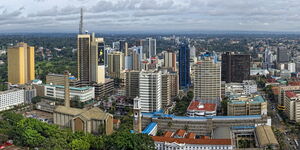The Kenyan Shilling held steady against the dollar despite earlier warnings by experts that the currency would depreciate.
On Thursday, June 27, the Shilling faltered exchanging at 129.7 against the dollar sparking fears of a downward spiral due to anti-government protests witnessed across the country.
Despite the earlier concerns, the Shilling held steady against the dollar on Monday to exchange at Ksh128.9 against the dollar as quoted by the Central Bank of Kenya.
This showed that the local currency had moved from strength to strength even with experts warning that the protests were likely to scare away investors.
Traders noted that despite the impressive performance of the local currency, it was under intense pressure due to increased demand for the dollar by manufacturers and importers.
Importers are Kenya's largest consumer of the greenback as it is the main medium of exchange in the international market.
Additionally, manufacturers use a huge chunk of Kenyan foreign exchange reserves because most raw materials for the manufacturing industry are imported.
On Friday, June 28, the Central Bank of Kenya assured Kenyans that the nation had sufficient foreign exchange reserves to cushion from sudden economic shocks.
"The usable foreign exchange reserves remained adequate at USD 7,800 million (4.1 months of import cover) as of June 27," CBK noted in its weekly bulletin.
"This meets the CBK’s statutory requirement to endeavour to maintain at least 4 months of import."
To shore up its foreign exchange reserves, Kenya has largely depended on loans from the World Bank and International Monetary Fund and raising capital through floating of Eurobond.
President William Ruto's administration has overseen the Kenyan Shilling transition from being the worst-performing globally to becoming the best-performing currency.












